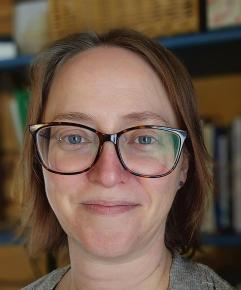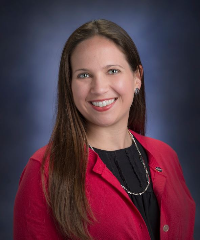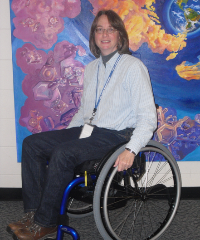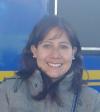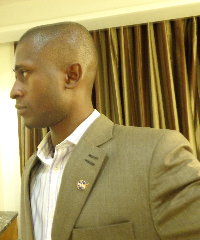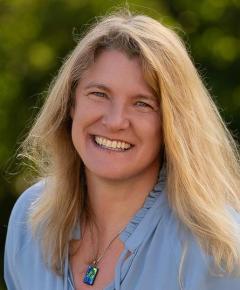Community Blogs
Community Blogs
Discover how the GLOBE community is engaging in all things GLOBE through the community blog posts below.
Learn how to create a GLOBE community blog post.
Filter By:
Blogs List
Discover the Wonders of the World’s Forests!
Greetings, middle and high school educators! Are you ready to bring
the wonders of forests into your classroom? Dive into this blog series
that bridges the resources of Natural Inquirer and the GLOBE Program,
designed to inspire curiosity, scientific exploration, and
environmental stewardship among your students.
GLOBE and Natural Inquirer Crosswalk
This series is part of the
GLOBE
and Natural Inquirer Crosswalk Project , which connects the
hands-on science of the GLOBE Program with the captivating research
found ...
Read More »
Posted in:
Curriculum:
SCIENCE AND MATH
GLOBE Science Topics:
CLIMATE
CLIMATE CHANGE
EARTH AS A SYSTEM
Investigation Areas:
EARTH AS A SYSTEM
PRECIPITATION
AIR TEMPERATURE
SURFACE TEMPERATURE
BIOMETRY (INCLUDING TREE HEIGHT)
LAND COVER CLASSIFICATION
CARBON CYCLE
Primary Audience:
TEACHERS
Teacher's Guide:
MIDDLE: 6-8
SECONDARY: 9-12
Audience
Middle school and high school
Time
Approximately 2 class periods: one for reading the Natural Inquirer
inquiry and reviewing images and charts, and one for using the GLOBE resources.
Day 1 : Dive into The World’s Forests 2 inquiry, exploring
images and data.
Day 2 : Apply your learning with GLOBE resources for hands-on discovery.
Materials
The
World’s Forests 2 (pdf), Inquiry 1
Earth
System Poster learning activities (pdf)
Analyzing
Global Patterns with the Earth System Satellite Images (see ...
Posted in:
Curriculum:
SCIENCE AND MATH
GLOBE Science Topics:
CLIMATE
GLOBE PROTOCOLS
EARTH AS A SYSTEM
Investigation Areas:
PRECIPITATION
BIOMETRY (INCLUDING TREE HEIGHT)
LAND COVER CLASSIFICATION
Primary Audience:
TEACHERS
Teacher's Guide:
MIDDLE: 6-8
SECONDARY: 9-12
Audience
Middle school and high school
Time
Approximately 2 class periods:
Day 1 : Dive into the fascinating world of biodiversity
through reading, exploring images, and analyzing charts.
Day 2 : Apply what you've learned by engaging with GLOBE
resources and interactive tools.
Materials
The
World’s Forests 2 (pdf), Inquiry 2
Earth
System Poster learning activities (pdf)
Analyzing
Global Patterns with the Earth System Satellite Images (see
text for instructions)
Optional: GLOBE Protocols ...
Posted in:
Curriculum:
SCIENCE AND MATH
GLOBE Science Topics:
CLIMATE
EARTH AS A SYSTEM
Investigation Areas:
BIOMETRY (INCLUDING TREE HEIGHT)
Primary Audience:
TEACHERS
Teacher's Guide:
MIDDLE: 6-8
SECONDARY: 9-12
Exploring the Benefits of Forests: A Dynamic Learning Experience for Middle and High School Students
Audience
Middle school and high school
Time
Approximately 2 class periods:
Day 1 : Dive into readings and analyze charts and images from
The World’s Forests 2.
Day 2 : Use GLOBE resources to bring learning to life through
hands-on exploration.
Materials
The
World’s Forests 2 (pdf), Inquiry 3
Earth
System Poster learning activities (pdf)
Analyzing
Global Patterns with the Earth System Satellite Images (see
text for instructions)
Optional: GLOBE Protocols
Surface ...
Posted in:
Curriculum:
SCIENCE AND MATH
GLOBE Science Topics:
CLIMATE
GLOBE PROTOCOLS
Investigation Areas:
SURFACE TEMPERATURE
Primary Audience:
TEACHERS
Teacher's Guide:
MIDDLE: 6-8
SECONDARY: 9-12
Audience
Middle school and high school
Time
Approximately 2 class periods:
Day 1 : Explore the role of forests in the carbon cycle
through reading and analyzing charts and images.
Day 2 : Engage with GLOBE resources and interactive learning
tools for hands-on discovery.
Materials
The
World’s Forests 2 (pdf), Inquiry 4
Carbon
Travels Game (pdf)
Optional: GLOBE Carbon
Cycle protocols
Optional: My NASA Data pacing guide Trees
and the Carbon Cycle (pdf)
What do the world’s forests have to ...
Posted in:
Curriculum:
SCIENCE AND MATH
GLOBE Science Topics:
CLIMATE
CLIMATE CHANGE
GLOBE PROTOCOLS
EARTH AS A SYSTEM
Investigation Areas:
CARBON CYCLE
Primary Audience:
TEACHERS
Teacher's Guide:
MIDDLE: 6-8
SECONDARY: 9-12
Audience
Middle school and high school
Time
Approximately 2 class periods:
Day 1 : Analyze the Natural Inquirer inquiry, focusing on
charts and text.
Day 2 : Use GLOBE tools to explore real-world data and trends.
Materials
The
World’s Forests 2 (pdf), Inquiry 5
Data
Visualization System
Advanced
Data Access Tool
Steps
in the Scientific Process
How well are we managing our forests worldwide?
Forest managers take many factors into consideration when making
decisions. In recent ...
Posted in:
Curriculum:
SCIENCE AND MATH
GLOBE Science Topics:
CLIMATE
CLIMATE CHANGE
GLOBE PROTOCOLS
EARTH AS A SYSTEM
Primary Audience:
TEACHERS
Teacher's Guide:
MIDDLE: 6-8
SECONDARY: 9-12
Time to dust off your Cloud Quest kit for the school year to get youth learning outdoors. Are you planning on running Science Action Club this Fall? Let us know at scienceactionclub@calacademy.org !
This Fall, open up your guidebook and take your youth outside to conduct Sky Surveys. Use SAC’s Sky Survey video ( https://sciclub.link/skysurvey ) to refresh your cloud sleuthing knowledge.
Want more youth attending your SAC club? Use our marketing toolkit ( https://sciclub.link/SAC-Marketing-Toolkit ) to advertise to youth and get them excited about ...
Posted in:
Curriculum:
STEM
GLOBE Science Topics:
GLOBE PROTOCOLS
Primary Audience:
TEACHERS
Teacher's Guide:
NGSS
MIDDLE: 6-8
The GLOBE Observer app (available for iPhones and Android devices) is a new, step-by-step way to submit cloud observations to NASA. Use your GLOBE sign-in information to sync your observations with your GLOBE data entry.
Here are some simple tips and tricks on how to better identify clouds while using the app. Your latitude, longitude, and time of day with be filled in automatically by the app!
1. What does your sky look like?
Is your sky completely clear with no contrails? Are there clouds or is the sky obscured that it makes it difficult to make any ...
Posted in:
GLOBE Science Topics:
BACKYARD SCIENCE
Investigation Areas:
CLOUDS
Learning Activities:
OBSERVING, DESCRIBING, AND IDENTIFYING CLOUDS
OBSERVING VISIBILITY AND SKY COLOR
ESTIMATING CLOUD COVER
Teacher's Guide:
UPPER PRIMARY: 3-5
SECONDARY: 9-12
MIDDLE: 6-8
LOWER PRIMARY: K-2
Gathering data
Once you have determined what protocols to use for your project, you will need to develop a plan for gathering the data. It might consist of using automated data collection or making your own measurements. Also, it may include finding data taken by others, such as when you compare your observations with those of another GLOBE school.
Automated Data Collection
If you are using an automated data collection device or devices, verify that the data are being recorded properly before your official testing timeframe. You will want to monitor that the data are being ...
Posted in:
Curriculum:
STEM
EDUCATION RESEARCH
SCIENCE AND MATH
TECHNOLOGY
Event Topics:
SCIENCE SYMPOSIA AND FAIRS
GLOBE Science Topics:
SCIENTIST SKILLS
MEETINGS/CONFERENCES
GLOBE Working Groups:
SCIENCE WORKING GROUP
EDUCATION WORKING GROUP
News Topics:
VIRTUAL SCIENCE FAIR
Primary Audience:
TEACHERS
STUDENTS
Teacher's Guide:
SECONDARY: 9-12
MIDDLE: 6-8
Prepare your Research Plan
Prof. Constantinos Cartalis (University of Athens)
___________________________________________________________________________
The selection of the research strategy for the formulation of your research plan is probably the most important decision to be made. The choice of the strategy, whether analytical, experimental, descriptive or a combination of these, depends on several inter-correlated parameters and preconditions. Broadly speaking a research plan has four main points:
explanation of proposed research ( what will be done) ...
Posted in:
Curriculum:
STEM
EDUCATION RESEARCH
SCIENCE AND MATH
TECHNOLOGY
Event Topics:
SCIENCE SYMPOSIA AND FAIRS
GLOBE Science Topics:
SCIENTIST SKILLS
MEETINGS/CONFERENCES
GLOBE Working Groups:
SCIENCE WORKING GROUP
EDUCATION WORKING GROUP
News Topics:
VIRTUAL SCIENCE FAIR
Primary Audience:
TEACHERS
STUDENTS
Teacher's Guide:
SECONDARY: 9-12
MIDDLE: 6-8
GRADE LEVELS
By Claudia Caro and Erika Podest
Curiosity is a natural characteristic of all people, especially the young. It is the first step for a child to build knowledge, and I am sure we can all remember as children asking what?, why?, where?, and numerous other questions as we tried to learn new things.
Unfortunately, as children grow up, this natural curiosity slowly fades. Why is this? We don’t exactly know, but it might be that as children grow older they think they know all the answers or because most school systems are structured to teach by providing answers rather than ...
Posted in:
Curriculum:
STEM
EDUCATION RESEARCH
SCIENCE AND MATH
TECHNOLOGY
Event Topics:
SCIENCE SYMPOSIA AND FAIRS
GLOBE Science Topics:
SCIENTIST SKILLS
MEETINGS/CONFERENCES
GLOBE Working Groups:
SCIENCE WORKING GROUP
EDUCATION WORKING GROUP
News Topics:
VIRTUAL SCIENCE FAIR
Primary Audience:
TEACHERS
STUDENTS
Teacher's Guide:
SECONDARY: 9-12
MIDDLE: 6-8
Authors: Claudia Caro and Olawale Oluwafemi (Femi)
Our participation in the International Virtual Science Symposium (IVSS) as judges has allowed us to learn more about the scientific experiences of students involved in the GLOBE Program. As members of the GLOBE Science Working Group with backgrounds in Geography and Biology, we would like to share our findings about the importance of the IVSS in the GLOBE community and give you some advice to empower your participation in this extraordinary yearly event.
Why an International Virtual Science Symposium?
Knowledge ...
Posted in:
Curriculum:
STEM
SCIENCE AND MATH
TECHNOLOGY
Event Topics:
SCIENCE SYMPOSIA AND FAIRS
GLOBE Working Groups:
SCIENCE WORKING GROUP
EDUCATION WORKING GROUP
Primary Audience:
TEACHERS
STUDENTS
COUNTRY COORDINATORS
Teacher's Guide:
SECONDARY: 9-12
MIDDLE: 6-8
GRADE LEVELS
When you start writing your GLOBE report for IVSS, it might be difficult because you might not sure where to start. We tend to start writing the Methods section first because it is something you did it yourselves and it should be relatively easy and straight forward to write. Second, you should write the Results section, do graphs, tables and texts (think of a best way to present your cool data to the whole world). Third, you should start writing the Introduction stating your hypotheses and predictions. The next step would be the Discussion section. It is funny to say but as scientists, ...
Posted in:
Curriculum:
STEM
EDUCATION RESEARCH
SCIENCE AND MATH
TECHNOLOGY
Event Topics:
MEETINGS
SCIENCE SYMPOSIA AND FAIRS
GLOBE Science Topics:
SCIENTIST SKILLS
MEETINGS/CONFERENCES
GLOBE Working Groups:
SCIENCE WORKING GROUP
EDUCATION WORKING GROUP
News Topics:
VIRTUAL SCIENCE FAIR
Primary Audience:
TEACHERS
STUDENTS
Teacher's Guide:
GRADE LEVELS
SECONDARY: 9-12
MIDDLE: 6-8
The UCAR Center for Science Education (UCAR SciEd) and BSCS are developing GLOBE Weather , an innovative, NGSS -based middle school science unit that combines activities, data analysis, and scientific protocols from the GLOBE Program . This project is funded by NASA and in coordination with the GLOBE Implementation Office. The final curriculum unit will be available (and free!) in 2019.
In the 5-week GLOBE Weather curriculum, students will engage with weather data to make sense of interesting real-world phenomena through the BSCS 5E instructional approach ...
Posted in:
Curriculum:
STEM
GLOBE Science Topics:
MEETINGS/CONFERENCES
EARTH SYSTEM SCIENCE
Primary Audience:
TEACHERS
Teacher's Guide:
NGSS
MIDDLE: 6-8
Please welcome Guest Blogger Shona Emery , a GLOBE 5th/6th Grade STEAM Teacher from Ellis School in Fremont, New Hampshire.
This blog is the fourth in a series of posts by GLOBE teachers sharing classroom experiences to support the student research process. The series is supported by NSF funding for the United States Regional Student Research Symposia . If you are a teacher interested in contributing, please contact Haley Wicklein for more information. Specifically, we would love to hear from teachers who can share challenges and advice around the topic of student data ...
Posted in:
Curriculum:
SCIENCE AND MATH
Event Topics:
SCIENCE SYMPOSIA AND FAIRS
GLOBE Science Topics:
SCIENTIST SKILLS
GLOBE PROTOCOLS
GENERAL SCIENCE
Investigation Areas:
DISSOLVED OXYGEN
FRESHWATER MACROINVERTEBRATES
HYDROSPHERE
WATER TEMPERATURE
WATER TRANSPARENCY
PH
Learning Activities:
PRACTICING YOUR PROTOCOLS
Primary Audience:
TEACHERS
Teacher's Guide:
DATA SHEETS
UPPER PRIMARY: 3-5
MIDDLE: 6-8
SITE DEFINITION SHEETS
PROTOCOL INSTRUCTIONS
FIELD GUIDES






